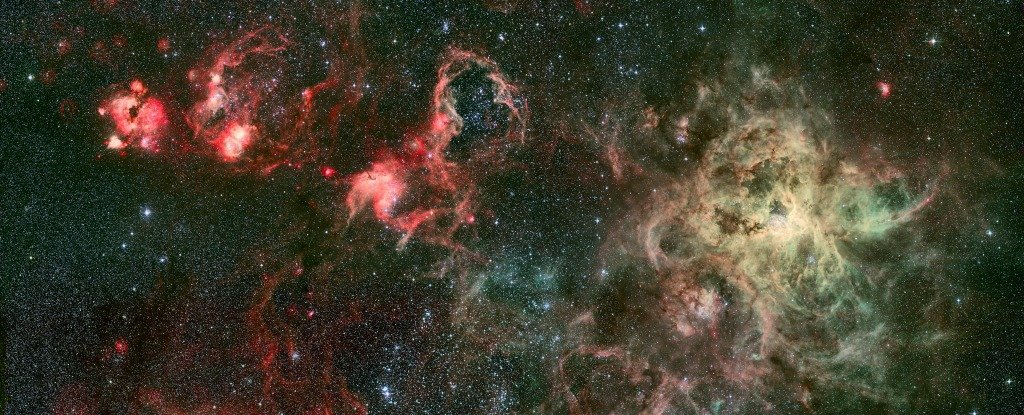

X7 is one of a multitude of filaments that exist in the Milky Way's galactic center. "In this process, the merged star is hidden inside a shell of dust and gas and the ejected gas perhaps produced X7-like objects." "One possibility is that X7's gas and dust were ejected at the moment when two stars merged," Ciurlo said. They think the cloud may have formed when two stars merged and ejected a shell of dust and gas that emerged around them in the process. While the researchers have predicted the filament's future with quite a high level of reliability, they know much less about its past. Star survives spaghettification by black hole Black holes may be the source of mysterious dark energy Colliding black holes 'ring' across space-time with gravitational wave ripples The process, according to the scientists, may produce some "fireworks" as the dust accelerates and heats up before crossing the event horizon. Images captured with Keck Observatory's NIRC2 instrument and adaptive optics showing X7's evolution between 2002-2021.Īfter the filament's demise, its material will be swallowed up by the black hole. "It's exciting to see significant changes of X7's shape and dynamics in such great detail over a relatively short time scale as the gravitational forces of the supermassive black hole at the center of the Milky Way influences this object," Randy Campbell, science operations lead at Keck Observatory and co-author of the study, said in the statement. Shortly after that, the cloud will completely dissipate. They found that the filament currently takes about 170 years to orbit around the galactic center, and calculated that in 2036, the filament will make its closest approach to the black hole. Thanks to infrared light's ability to penetrate through dust, the astronomers were able to observe the filament's motions in great detail. The astronomers observed X7 using the NIRC2 instrument on Keck that reveals the universe in the heat-emitting near-infrared light, the same wavelength that NASA's James Webb Space Telescope specializes in. "This is a unique chance at observing the effects of the black hole's tidal forces at high-resolution, giving us insight into the physics of the galactic center's extreme environment," Anna Ciurlo, assistant researcher at the University of California, Los Angeles, and lead author of the study, said in a statement. Video footage (opens in new tab) of the event showed the space rock burning up in a flash of light that was briefly brighter than the sun, before creating a powerful sonic boom that broke glass, damaged buildings and injured around 1,200 people in the city below, according to Live Science's sister site (opens in new tab).Artist's rendering of what is anticipated to happen around the year 2036 when X7, an elongated filament of dust and gas, makes its closest approach to the Milky Way’s supermassive black hole. It exploded with a force 30 times greater than the atomic bomb that rocked Hiroshima, according to NASA (opens in new tab). The Chelyabinsk meteor explosion was the largest of its kind to occur in Earth's atmosphere since the 1908 Tunguska event. Experts at the time described the event as a major wake-up call to the dangers asteroids pose to the planet.

Fortunately, the meteor exploded around 14.5 miles (23.3 kilometers) above the city of Chelyabinsk in southern Russia, showering the surrounding area in tiny meteorites and avoiding a colossal single collision with the surface. 15, 2013, an asteroid measuring 59 feet (18 meters) across and weighing 12,125 tons (11,000 metric tons) entered Earth's atmosphere at around 41,600 mph (66,950 km/h).


 0 kommentar(er)
0 kommentar(er)
